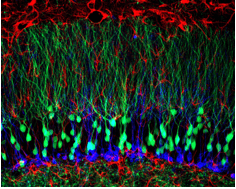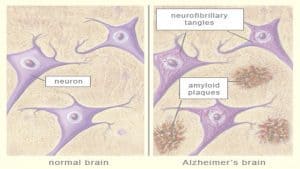Once more, as every 11th of February, we are very happy to celebrate the International Day of Women and Girls in Science with all the scientific community. A day that aims to boost their empowerment in science as well as it reminds us to keep fighting for full and equal access to science for women and girls. This day also reminds us of the value of many women who developed their scientific career in different fields and brought new discoveries to society. However, we still have a long way to go if we want to properly give them the credit they deserve for their work. Meanwhile, by celebrating this International Day of Women and Girls in Science, we can remind everyone about the important and fantastic work women have been and are currently working on to keep their contributions to science going.
Frequently, the scientific community uses the name of Ada Lovelace as a symbol or icon for all the women carrying out their work and research in science and technology. However, we can also name several other women scientists who contributed with their work to the recognition of women in science. That is the case of Rita Levi-Montalcini.

Figure 1. Rita Levi-Montalcini, portrait. Photo credit: Blog Nature.
Rita Levi-Montalcini was an Italian scientist honored for her work in neurobiology. She was awarded with the Nobel Prize in Physiology or Medicine (1986) jointly with her colleague Stanley Cohen for the discovery of the nerve growth factor (NGF). From 2001 until her death, she also served in the Italian Senate as a Senator for Life. This honour was given due to her significant scientific contributions. In addition, Rita reached one of her biggest achievements on the 22nd April 2009, as she reached ¡the age of 100!. At the time of her death, she was the oldest living Nobel laureate.
Rita´s father, who was a mathematician and electrical engineer, was against his daughter attending University, as this would interfere with their primary roles as wife and mother, some roles that still are always linked to women even nowadays. However, it was another woman, Rita´s mother, who encouraged her to talk with her father again, and explain her intention to study medicine. At the age of 20, Rita decided that she wanted a very different life from the one thought for every woman in these times: she wanted to go to medical school and study to be a doctor (biography: “In Praise of Imperfection”). She started her career in Turin in 1930, where she became in love with the process of neurogenesis. Even as a jewish woman and scientist in times of Mussolini and Hitler, Rita was determined to continue her research. Her perseverance and resilience made her build a little laboratory in her own bedroom. She even sent manuscripts about her research discoveries to Belgium so they could be published. It is important to remember that, due to World War II, publishing scientific articles was impossible for her. Rita finally split her scientific career between the US, where she was a Full Professor at Washington University (1958-1977), and Italy, where she continued her research in her second lab in Rome (1962).
During her time in the US, her work on an in-vitro culture technique to grow neurons in a dish was a breakthrough. Levi-Montalcini, together with Stanley Cohen, discovered that peripheral tissues secrete a factor that directly influences neuronal survival in mammals. Their discovery was published in 1960, and they termed the substance “Nerve Growth Factor”, also known as NGF. The NGF was only the first of an entire class of chemotactic factors (neurotrophins). A chemotactic factor is a molecule which helps to the orientation or movement of an organism or cell. In this case, the NGT factor promotes the growth and survival of specific subsets of neurons, among other functions. As the field of molecular neuroscience progressed, it became evident that neurotrophins also have roles in the adult brain. In 1986, they both received the Nobel prize for their work and the immeasurable impact it has had on multiple fields of scientific research.
Now we can understand how Rita Levi-Montalcini’s perseverance and passion for science made her one of the most important women scientists of the 20th century, inspiring many other women scientists around the world. Personally, for those of us who have studied and worked in the field of neuroscience, Rita Levi-Montalcini means an example of perseverance for what we love and above all, an example of claiming our worth as women, as humans and as professionals. In this way, we can say that she is a wonderful example of the role of women in science in recent centuries. Let’s continue working to make visible the role of many other women who have been working hard and contributing to the scientific world with their scientific projects, as Rita did with hers.

Figure 2. Margarita at work. Photo credit: Eva Latorre.
* * *
By Margarita Segovia Roldán (@marga_segovia). Postdoctoral researcher at University of Zaragoza.






